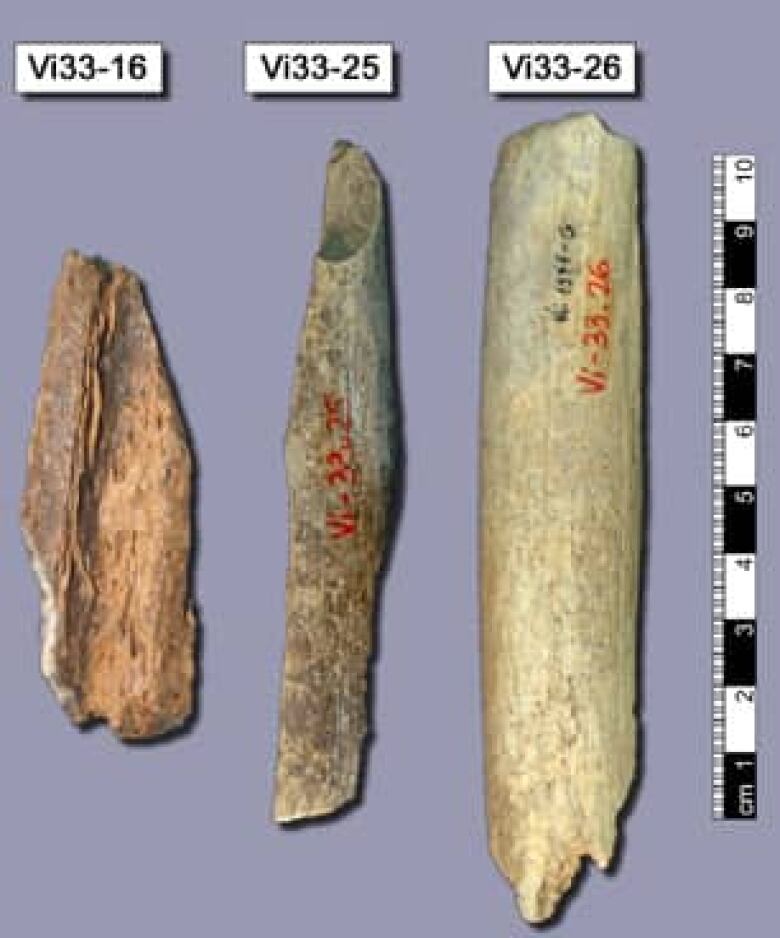New genome shows Neanderthal trace in humans
The first partial genome of Neanderthals has revealed they probably interbred with humans, with most of us carrying up to four per cent Neanderthal DNA.

The research is revealing some interesting differences and surprising similarities between humans and our closest evolutionary relatives.
"Today, we estimate that people who live outside of Africa are about one to four per cent Neanderthal," Ed Green of the University of California, Santa Cruz, said in an interview with CBC Radio's Quirks & Quarks.
Green is the first author of the paper describing the Neanderthal genome, appearing this week in the journal Science.
By comparing the genome to those of chimpanzees and modern humans, the closest living relatives of Neanderthal, the scientists were able to estimate how much of the complete genetic sequences they were able to piece together, and to see how different and how similar Neanderthal is to us.
Neanderthal is an extinct species of human that first appeared about 400,000 years ago and went extinct about 30,000 years ago. Their fossil remains have been found across Europe and in western Asia.
The researchers were able to collect enough small fragments of DNA more than a billion in all to have at least one copy of 60 per cent of the entire genome of Neanderthal.
"Many positions [in the genome] we have seen two or three times, and then there are positions we haven't seen any observations yet, which leaves still some work for the future," Green said.
Get degraded in ground
Extracting the Neanderthal DNA from the bones was a difficult, four-year process, in part because samples of Neanderthal bones with any DNA left are so rare. The genetic material breaks down over thousands of years.

And the vast majority of the DNA that is left isn't Neanderthal DNA. Most of it comes from bacteria and other microbes that have invaded the bone.
"Only about one per cent of the DNA sequences we extract are of interest to us, are Neanderthal sequences," Green said.
To compare the Neanderthal genome with that of modern humans, the researchers sequenced the genomes of five people from various parts of the world: southern Africa, West Africa, Papua New Guinea, China and France.
Scientists expected, based on fossil evidence, to see a genetic "signal" that indicated that Neanderthals and modern humans interbred in Europe, where the two species coexisted for 10,000 years.
"What we have found, and it was quite a shock, is that this signal exists within the genomes of three individuals that we've sequenced, all of the individuals (from) outside of Africa," Green said.
Interbreeding limited
The most likely explanation for this is that modern humans and Neanderthals interbred in the Middle East shortly after humans spread outside of Africa, Green said. The small amount of Neanderthal DNA found in non-African humans about one to four per cent suggests the interbreeding was probably limited.
"[Humans] picked up some small amount of Neanderthal genetic ancestry and then brought this with them whenever they went in the rest of the world," he said.
As well as learning more about Neanderthals themselves, researchers will use the Neanderthal genome as a comparison to learn more about humans. Because the two species are so closely related, any differences are significant, Green said.
"The main motivation for this in the first place was to use it as a resource to compare against the human genome, to understand recent human evolution," he said.
Scientists comparing the two genomes can scan through the genes looking for areas of high variability in humans, regions of DNA where one person is likely to have different code compared to another person.
They can then compare these regions to the Neanderthal genome to see if that variability existed in that species or if it emerged sometime after Neanderthals and humans split from a common ancestor.
The researchers found 212 regions on the genome where variations are commonly seen in human, but not in Neanderthals.
Implications for evolution
"Looking for these regions that are devoid of variation gives us a really powerful way to probe our evolutionary history and ask what happened right in this important evolutionary time when we were becoming fully modern humans," said Green.
The research is still in its early stages, but Green said the results already have interesting implications for human evolution.
"What's interesting is that many of the genes in these regions have to do with cognition with brain function," he said.
For example, mutations in these genes have been linked to Down syndrome, schizophrenia and autism.
Other genes where humans differed from Neanderthal were involved in energy metabolism and in the development of the skull and rib cage.
Green said he was surprised to see so many regions where humans differed from Neanderthals.
"It's very suggestive that there were many, many episodes of positive selection, many adaptations that we have that were found to be beneficial by evolution that led to some advantage,"he said.












_(720p).jpg)


 OFFICIAL HD MUSIC VIDEO.jpg)
.jpg)



























































































